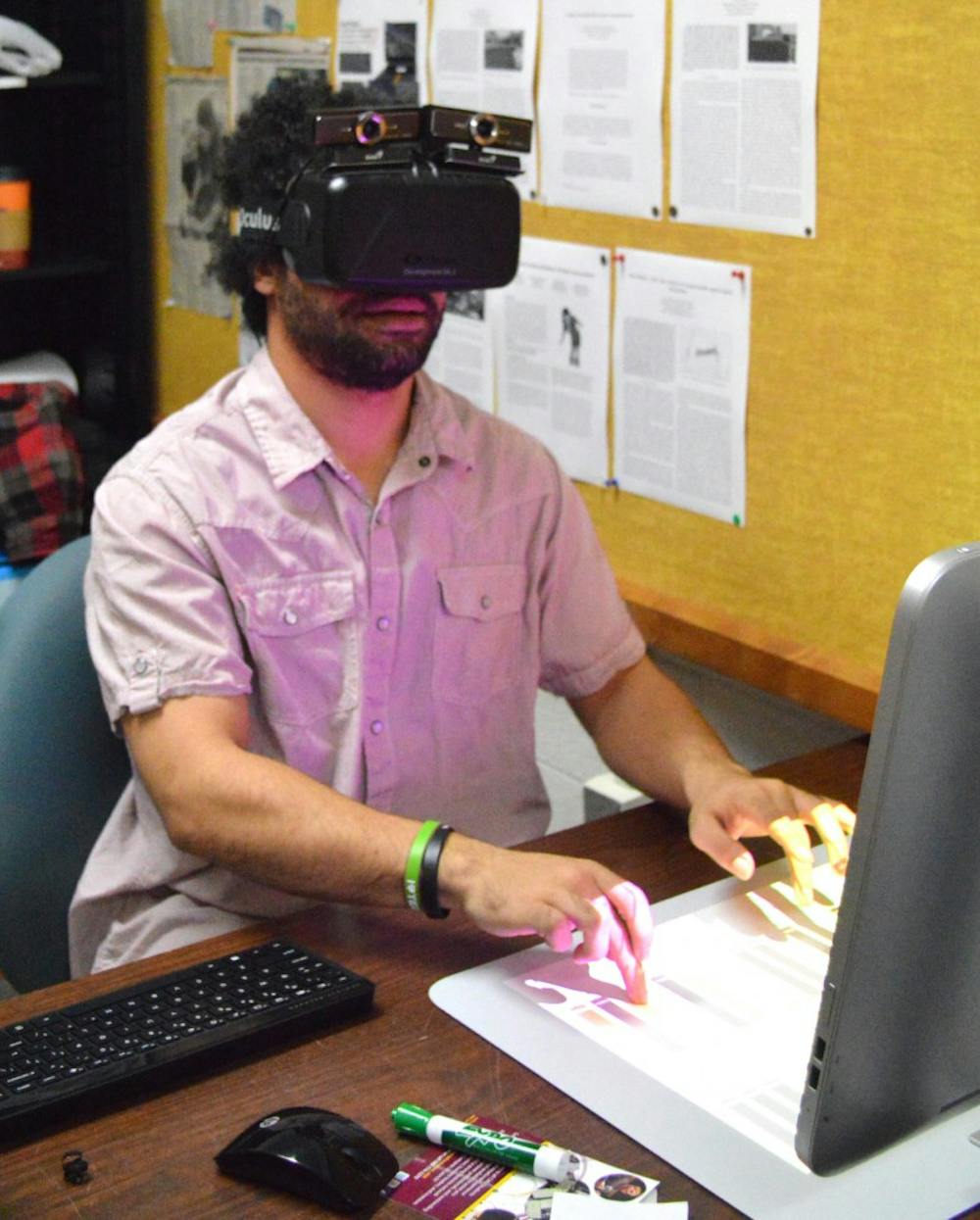Virtual reality to help the visually impaired regain vision

The words “virtual reality” traditionally bring images of large science fiction helmets and scenes from The Matrix. However, Central Michigan University Assistant Professor of Computer Science Anthony Morelli is finding other ways to put the technology to use helping those with disabilities.
Morelli has been working to use virtual reality technology as a way of aiding those who have limited or no vision in one eye.
“(Virtual reality) is an isolated environment where the entire vision is replaced by something else,” Morelli said.
In this case, the “something else” is a video feed of the environment around the user, produced by two cameras designed to mimic the human eye. Morelli has fixed these cameras to the top of an Oculus Rift, a virtual reality system that takes form in what looks like high-tech diving goggles.
The video feed is displayed on a screen in the Oculus Rift to create the image and is projected to the user’s good eye.
“We are learning lots about it," Morelli said. "It is still in the early stages."
He also shared some of the drawbacks of the current technology that he found in his studies.
“You lose the ability to look around with your eyes because you only get to see where the cameras are pointing," Morelli said. "It was something that was not natural.”
Other drawbacks dealt with the need for a higher resolution screen, eye tracking and the general size and bulkiness of the Oculus Rift. The virtual reality technology itself is still evolving, Morelli said, and he expects this may solve some of the problems encountered during his research.
Morelli also worked with senior Michael Ostrander who is part of the Information Technology program here at CMU.
Ostrander and Morelli had met and talked during a virtual reality event on campus when Ostrander mentioned he had been born with only one eye. Morelli remembered Ostrander and his story, and offered him the independent study.
Ostrander gave a prediction for the future of this application of virtual reality.
“It depends on how big virtual reality is and if it keeps going up with its momentum," he said. "I’d say an easy 10-20 years that this technology will be something you can go into the store and buy.”
Professor Michael Stinson of the Computer Sciences department also has his predictions for the future of Morelli’s work and virtual reality.
“Some people are colorblind, some people have synesthesia where they see color in words, other people are blind, and other people have partial vision,” Stinson said. “I think his work may give us some insight into how we as humans utilize sight.”



